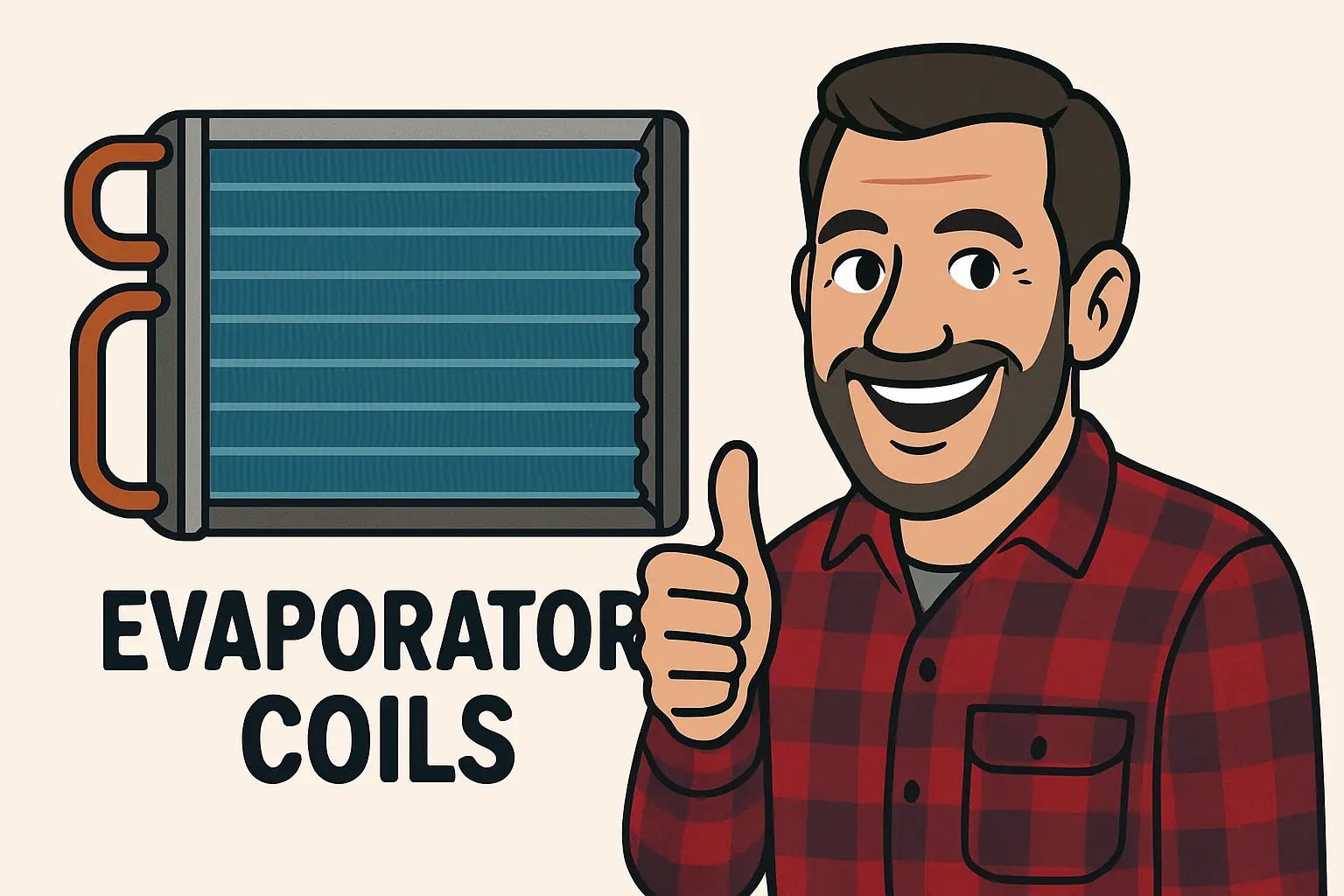Hey there, it’s Mike 👋
Let me tell you—I've seen more HVAC setups ruined by mismatched evaporator coils than I care to count. Folks think a coil’s a coil, but let me stop you right there. Picking the wrong size can mess with your airflow, screw up your refrigerant pressure, and leave your home just as uncomfortable as before you dropped a grand on parts.
So let’s dig in and clear up the guesswork. You’ll learn how to match coils to BTUs, what happens when you get it wrong, and how to make sure your new evaporator coil plays nice with your existing equipment.
Why Coil Size Matters (Spoiler: It’s Not Just About Cooling Power)
When we talk about “coil size,” we’re usually referring to the tonnage or BTU (British Thermal Unit) capacity the coil can handle. The evaporator coil needs to match your air conditioner’s capacity so refrigerant can move efficiently and heat transfer happens smoothly.
Here’s what can go wrong when your coil isn’t the right size:
-
Undersized coils restrict refrigerant flow and reduce cooling efficiency
-
Oversized coils don’t dehumidify properly, leading to that sticky, swampy feeling
-
Pressure imbalance can damage your compressor over time (read: expensive fix)
👉 According to Energy Star, properly sized components are the key to optimal HVAC efficiency. That includes your evaporator coil.
A Quick BTU-to-Ton Conversion Refresher
Let’s keep it simple:
-
1 ton = 12,000 BTUs
-
1.5 ton = 18,000 BTUs
-
2 ton = 24,000 BTUs
-
2.5 ton = 30,000 BTUs
-
3 ton = 36,000 BTUs
-
3.5 ton = 42,000 BTUs
-
4 ton = 48,000 BTUs
-
5 ton = 60,000 BTUs
If your outdoor condenser is a 3-ton unit (36,000 BTU), then you generally want a 3-ton evaporator coil. But there are exceptions, especially with modern high-efficiency systems.
Matched Systems vs. Unmatched Systems
Matched systems are designed and tested by the manufacturer to work together—condenser, coil, and furnace (or air handler). That’s your safest route and usually gets you the best performance.
But sometimes you're working with a Frankenstein setup—a new coil with an old condenser or vice versa. In that case, you’ll want to verify compatibility using:
-
Manufacturer's performance data
-
AHRI reference numbers (you can search them here)
Pro tip: A larger coil might be used in high-efficiency systems to allow for lower pressure drops and more refrigerant volume. But don’t assume bigger is better—it has to be part of a balanced system.
Matching Coils to Condensers: Examples
Here’s how BTU matchups typically look with common system configurations:
| AC Unit (Tons) | BTU Output | Recommended Coil Size |
|---|---|---|
| 2 Ton | 24,000 | 2 to 2.5 Ton Coil |
| 3 Ton | 36,000 | 3 to 3.5 Ton Coil |
| 4 Ton | 48,000 | 4 to 5 Ton Coil |
| 5 Ton | 60,000 | 5 Ton Coil |
Check with the coil’s specs too—many are listed as “2.5-3 Ton,” which gives you some wiggle room as long as everything stays in spec.
And remember, if your system uses R-32 refrigerant (which is becoming more common), your options may be a bit different. It’s a great low-GWP choice, but it also runs at slightly different pressures than R-410A. You’ll want a coil designed specifically for R-32 compatibility. More on that in this helpful breakdown by Daikin.
Don't Forget the Coil Orientation
When choosing a coil, make sure it fits the layout of your system:
-
Vertical coils are for upright installs—like in basements or closets.
-
Horizontal coils are for attic or crawl space installs.
The wrong orientation can lead to drainage issues, short cycling, and premature failure. HVAC.com has a handy explainer on choosing the right coil orientation.
What Happens if You Oversize or Undersize?
Here’s what I’ve seen happen on installs that didn’t match up:
-
Oversized coil? Poor dehumidification. Your house feels cold and clammy.
-
Undersized coil? Weak cooling, higher electric bills, system wear and tear.
-
Either one? You risk voiding the manufacturer’s warranty and losing out on efficiency gains.
So yeah, getting this part wrong stings—financially and comfort-wise.
Final Word from Mike 🧰
Look, I’ve said it before, and I’ll say it again—the right coil isn’t always the biggest or cheapest one. It’s the one that matches your system’s needs and specs like a glove. Take the time to match BTUs, refrigerant type, and airflow orientation. Trust me, your comfort (and wallet) will thank you.
And if you want a head start, check out our lineup of evaporator coils ready to ship, with clear size and spec info right up front.
This you might have some evaporator coil leaks? Visit my guide: How to Catch and Handle a Leaky Evaporator Coil.
Catch you next time—and keep your airflow smooth! 💨
- Mike, your cool HVAC guide







